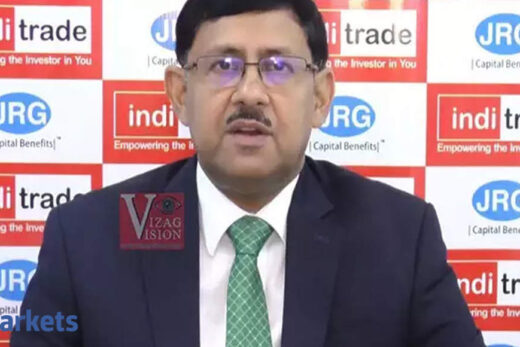Would you say that one is safer having a larger exposure to large cap and even for mutual fund investors, are the largecap funds safer or would it have to be a mix of both midcaps as well as large caps?
It has to be a more balanced approach I think largecaps definitely provide more stability and in this kind of an environment it offers much better downside protection relatively I would say but I think one has to take a slightly medium term view and with the outlook on the overall growth, we are looking at a new economic cycle playing through.
So in that environment, even the midcaps and small cap companies which are more dependent on domestic growth will do well and one would want to participate in that though there might be volatility in the near term. But that would also provide an opportunity. Given that outlook, a balanced approach with some large caps or probably a multicap fund would be a better option. Even some allocation to mid and smallcaps within one’s risk appetite should be looked at because over a 3-5-year period, the mid and small caps should also deliver good returns.
If an investor were to come to you and say that he is looking to get rich within the next one year, what would be your advice?
You cannot get rich in one year. You have to be patient for that but I would say that for somebody looking to invest even from these market levels, the long-term risk reward is still favourable towards equities. Equities will give you returns which are higher than the risk premium that equities have historically demanded. The returns could still be around 10-12% which is not bad, considering the penetration would be around 5% or so.
So one would recommend that the allocation towards equity be slightly higher than the long-term target. Considering the near-term volatility and risk, it would be better not to pull that at one go. Market will give you opportunities to increase the allocation if somebody is underweight there. So I would say a slightly higher tilt over equity would do well from a one-year perspective.
I would say that it is better to look at some of the less risky options on the equity side — be it the asset allocation fund or the balanced advanced fund. That would do well for investors if they have a shorter term horizon.
How are you approaching PSUs because there are some PSUs where strategic sale will happen; there are some PSUs which are on the brink of increasing their dividend yield and there are some PSUs which have become strategically important like BEL or BEML?
Yes, the PSU space still offers a reasonable amount of value if you compare it with the broader market, But the PSU space can be a bit tricky. You shouldn’t get into a value trap there. So go for PSUs where you see some value unlocking due to a strategic sale. Normally, when a private buyer comes in, there is some amount of cost efficiencies in the companies and there is always some kind of upgrade to normal earnings potential that one would see. There is also a chance of a PE rerating over there.
A lot of the PSUs have got a dominant market share in the sectors where they are in. Apart from that, in the other PSUs, one has to see what they are doing with the cash. PSUs in the past have not made the right capital allocation decisions and they have not really rewarded the shareholders. One has to see how the individual companies are deploying their capital and how much they are returning back to the shareholders if they do not have any use of that. Companies which may not clearly have a policy in place, but still enough value and a good dividend yield, could still be fairly good for value investors.
Finally one has to be fundamentally positive on the business. If the underlying business is not doing great, then there is not real money to be made in the PSUs; it could just be a short term trade. By and large, it still looks promising from where the valuations are and if one is looking at not the high growth stocks but more od the value stocks, then with reasonable returns and a good margin of safety, some of the PSUs still offer that opportunity.
If the US economy performs better and if there is fear of inflation and growth coming back, isn’t that a natural tailwind for IT and pharma? But in this fall, IT and pharma have fallen, in fact pharma has fallen much more than IT!
Pharma in a sense is not so much linked to US GDP growth. But IT definitely has a correlation over there. Pharma rallied much earlier, it did very well in the last calendar year and probably it is taking a pause and we are seeing a sector rotation which is moving into cyclicals. But otherwise, in case of the pharma sector, there is not much change in terms of the earnings growth or earnings trajectory.
There were some tailwinds in the pharma sector because of the Covid and some of the drugs saw a sharp increase over there. Now as the vaccine plays out, the Covid- related uptick might slow down. But the sector looks fairly good. The pharma sector looks more reasonably priced now and it should do well in the market correction.
The IT sector clearly is in a slightly better trajectory and with the US growth coming in, the IT spend is increasing because of the drive towards digitisation. There is higher spend and also revenue growth. The Accenture numbers that came in yesterday also showed an increase in terms of their outlook. IT sector should continue to have a tailwind in terms of revenue growth. The margin improvement that we saw in the last two quarters, would probably take a back seat.
In balance, I would say that the sharp rally in the IT sector in the recent past could be a reason for a mild correction but the outlook still remains fairly strong and with the US economy doing well, revenue growth for the IT companies or order inflow should remain fairly robust.



